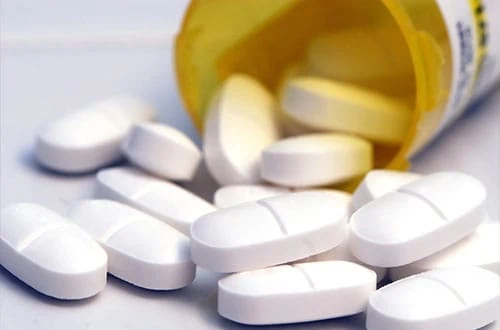
What is Substance Abuse?
Addiction is a complex and chronic disease that affects the brain. Those with drug and alcohol addiction, known medically as substance use disorder, intensely focus on the use of certain substances. They exhibit compulsive and repetitive behavior in order to obtain and abuse drugs or alcohol. Commonly, this behavior persists despite harmful consequences affecting their relationships, career, or health. The psychological and physical drive behind this focus progresses from initial abuse into severe dependence. It is true that the initial choice to try drugs or alcohol is a conscience decision for most people, however, the disease of addiction is in fact the result of a biological change in the brain [1,2].

The American Psychiatric Association has listed that people may develop a substance use disorder or addiction from use of:
- Alcohol
- Opioid pain killers (codeine, oxycodone, and heroin)
- Cocaine, methamphetamine, and other prescription stimulants such as Adderall
- PCP, LSD and other hallucinogens such as mushrooms
- Inhalants (paint thinners and glue)
- Sedatives, hypnotics and anxiolytics (commonly prescribed for anxiety such as Xanax)
- Tobacco
- Marijuana
Almost all of these drugs affect the brain’s reward system normally activated by natural behaviors necessary for survival (drinking water, eating, etc.). Activation of this circuit is triggered by the presence of dopamine, a neurotransmitter or “brain chemical,” that is involved in movement, motivation, emotion, and pleasure. When drugs are used, dopamine is released in large quantities. This release “rewards” the user with feelings of pleasure and unfortunately reinforces the behavior [1].
Some of these substances, like heroin and marijuana, achieve this effect and others by imitating naturally occurring chemicals in the brain to “trick” activation or suppression of brain circuits [1]. Brain imaging studies have shown temporary changes during a “high” can cause long lasting changes in areas of the brain for those with addiction. The areas affected are related to judgment, decision making, learning, memory, and behavioral control in addition to the reward system [2]. These chemicals essentially disrupt the way the brain sends or receives messages during a high and by association, disrupt functioning of the body as well. This can be a deadly effect as over activation of the nervous system can affect the body in such a way that breathing ceases or heart attacks occur [1].
Over time people with substance use disorder build up a tolerance during their physical dependence [2]. This is the body’s way of trying to negate the effects of the drug to maintain a homeostatic balance. For someone with an increased tolerance, larger amounts of the drug are needed to feel the same effects. Being in the same place one usually uses, seeing a needle or pile of white powder, smelling cigarette smoke, and other instances are environmental “cues” that cause the body to start reacting in such a way as to compensate for the anticipated drug. Stress and depression can also act as cues if those with substance use disorder use drugs or drink to cope. Their bodily responses to cues are what then cause cravings for the drug or alcohol [3].
According to the National Institute on Drug Abuse, people begin taking drugs for a variety of reasons, including:
- out of curiosity
- social pressure
- to feel good – feel euphoria or get “high”
- to feel better – cope with or relieve stress, anxiety, or depression
- to do better – improve academic, career, or social performance
Those with addictive disorders may be aware of their problem, but find it difficult to stop even if they desire to. Their struggle with addiction may cause health problems as well as problems at work, with family members, and with friends. While there is no cure, addiction can be managed like other chronic, relapsing diseases such as diabetes or heart disease. There are a number of effective treatments and therapies available to manage addiction and address underlying causes such as trauma. With treatment and determination, those with substance use disorder can recover from their physical dependence to manage addiction in a normal and productive way [1,2].
Signs of Addiction
Symptoms of substance use disorder are grouped into four categories:
- Risky Use: substances are used in potentially dangerous environments and situations.
- Drug Effects: withdrawal symptoms are felt when use is halted or stopped or a need for larger amounts of the drug are required for the same effect (tolerance).
- Impaired Control: a desire to stop or cut down in which the person finds that they cannot stop and experiences cravings for the substance.
- Social Problems: substance use, withdrawal, or cravings interfere with daily functioning at work, in school, or in relationships. Activities or hobbies are given up or cut back because of substance use.
Signs of addiction include the following:
- Changing Appearance: Serious changes or deterioration in hygiene or physical appearance – lack of showering, unclean clothes, long sleeves or sweatshirts to cover potential track marks.
- Secrecy: Denial or going out of one’s way to hide the amount of drugs or alcohol consumed.
- Relationship Issues: Responding to inquiries about substance abuse with anger, denial, and lashing out against family, friends, and loved ones. Not following through on promises, lying, absenteeism, tardiness, and receiving complaints from co-workers, supervisors, teachers or classmates.
- Neglecting Other Activities: Spending less time with family and friends or on activities that used to be important. Drop in performance at work or school due to forgetfulness and lack of motivation.
- Loss of Control: Drinking or using drugs despite trying to cut down or stop.
- Tolerance: Needing larger amounts of a drug or alcohol to feel the same effects. Consuming large amounts and still appearing sober.
- Risk Taking: More likely to get involved in dangerous activities in order to steal or obtain money for one’s drug of choice.
- Continued Use Despite Negative Consequences: Acknowledging job loss, decrease in performance, relationships affected, or concern about health and continuing to use drugs or drink despite these issues.
- Withdrawal: Experiencing symptoms such as: anxiety or jumpiness; shakiness or trembling; depression, irritability, fatigue, sweating, nausea and vomiting, insomnia, or loss of appetite after drug or alcohol use is decreased or stopped.
Symptoms Of Withdrawal
Withdrawal symptoms occur after someone has developed a physical dependence to alcohol, prescriptions medications, or other chemical substances and then suddenly stops taking that substance. Similar to the development of tolerance, the body gets “used to” the presence of the substance in its system and tries to negate its effects to achieve a normal state. If the use of a drug, such as heroin, causes a set of symptoms including decreased sensation of pain, increased euphoria, and constipation, withdrawal symptoms will present as the exact opposite: increased sensation of pain, dysphoria, and diarrhea. Since the body tries to compensate for the consistent presence of the drug, the body continues to compensate until it eventually recognizes the drug is no longer present [3,4].
Caring & Safe Detox in Mexico
The first few days of recovery from opioids or alcohol are crucial. That’s why we offer medical detoxification and top residential treatment for opiate and alcohol addiction. The people who come to our serene drug rehab in Mexico are in need of recovery from opiate addiction, alcoholism, or any other substance.

Alcohol
Withdrawal symptoms from alcohol use may begin from anywhere from 4 to 12 hours after drinking has ceased. Symptoms may last as long as several days and can range from mild to life-threatening depending on the length and severity of abuse. Medical detoxification lessens the intensity of symptoms and helps prevent life-threatening seizures [4]. Symptoms of withdrawal from alcohol include:
- Severe trembling
- Feeling tense
- Sweating
- Intense worry
- Nausea or vomiting
- Feeling confused and/or jumpy
- Shakiness
- Feeling things on your body that are not there
- Hallucinations (seeing or hearing things that are not there)
- Seizures

Prescription Meds or Illegal Drugs
Symptoms of withdrawal from illegal drugs (heroin, meth, etc.) or prescription medicines (Xanax, Adderall, oxycodone etc.) depend on the drug or combination of drugs. Medical detoxification lessens the intensity of symptoms and helps prevent life-threatening seizures [4]. Common withdrawal symptoms include:
- Constipation or diarrhea
- Abdominal pain
- Nausea and vomiting
- Drenching sweats
- Difficulty sleeping
- Nervousness and shaking
- Hallucinations (seeing or hearing things that are not there)
- Feeling things on your body that are not there
- Hallucinations (seeing or hearing things that are not there)
- Seizures
References:
- NCADD (2015). Understanding addiction. National Council on Alcoholism and Drug Dependence, INC. https://ncadd.org/about-addiction/drugs/understanding-addiction. Last accessed: April 15, 2016
- Parekh, R. (2015). Physician review: What is addiction? American Psychiatric Association. https://www.psychiatry.org/patients-families/addiction/what-is-addiction. Last accessed: April 15, 2016
- Poulos, C., Hinson, R., Siegel, S. (1981). The role of Pavlovian processes in drug tolerance and dependence: Implications for treatment. Journal of Addictive Behaviors, 6(3): 205-211.
- Blahd, W., O’Connor, M. (2014) Alcohol or drug withdrawal physician review. Substance Abuse and Addiction Health Center, Healthwise. https://www.webmd.com/mental-health/addiction/alcohol-or-drug-withdrawal. Last accessed: April 15, 2016.
*This website is not meant to diagnose disease but help in identifying signs and symptoms. Please visit the American Psychiatric Association for more information.
